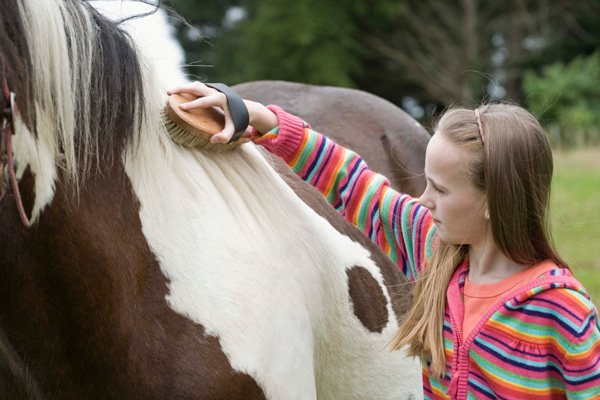
Horse farms are often considered one of the most “green” businesses in agriculture. We don’t spray a lot of pesticides or spread undue amounts of chemical fertilizer. We seldom till up the land, which can lead to wind or water erosion of the topsoil. And our animals are fairly low-impact on the environment.
As humans how we treat items such as recycling and energy efficiency are widely varied—some are great at doing their part, and others fall way down on this responsibility
However, before we start giving ourselves too many pats on the back, let’s look at some of the ways we can be better conservationists on the farm side and on the human side.
While horses are not as hard on the land as some animals, livestock overpopulation can destroy a field or paddock. Keep a good cover of grass on your fields and paddocks, pick up manure and maintain a proper “horse per acre” ratio.
If you purposefully create a sacrifice paddock or dry lot, make sure to reduce or eliminate any runoff from that area and use proper manure management.
Also, if you have creeks or streams on your property, there is the potential for horses to create erosion when they cross or wade in to drink. Fencing off running or standing water (ponds or lakes) is the best way to prevent this erosion, but if you can’t do that (a creek runs through your pasture), you should fence to only allow horses to cross or drink in specific areas. And you should put gravel or rock there to help eliminate erosion.
Contact your local county extension office to learn more about mud and erosion management in all of these situations.
Installing gutters around your barn will not only help eliminate water from running under your foundation, but you can collect rainwater to use in tending your landscaping or even for watering your arena. Make sure to prevent the rain barrels from becoming mosquito breeding pools.
Manure or compost piles must be properly maintained to prevent unwanted fly and odor problems (for you and the neighbors). Follow recommended composting or manure spreading protocols.
Recycling of consumer goods comes in many shapes and forms. Most is quite simple to do, and some can be very creative. Consumer good ecycling in your area might include glass, plastic and paper. Sometimes you have to separate these into separate bins or in specified recycling bags. Make space in the barn office or tack room for recycling bins and encourage everyone to participate.
Keep in mind that just because it is no longer of use to you in the barn doesn’t mean someone else might not love to have it! As the old saying goes, “one man’s trash is another man’s treasure.”
Baling twine is often used around the barn, but what about more “exotic” uses for it? If someone is creative you could make a “braided rug” out of baling twine. Also, some people wrap and knot baling twine to make long (and very sturdy) ropes that can be used to tie down tarps or hay.
Students at the local elementary or middle school might like those long mane and tail hairs to use in art classes (make sure to wash the hair before donating). Old horseshoes can go the same way, or even to a local artist who sculpts or welds.
Donate unused or broken tack to a local organization (such as 4-H or Pony Club) to put in their tack sale. There often are people who will buy tack that needs a little repair work in order to get a bargain. Ask your local tack repair shop if they want broken reins or other leather scraps, then put a bucket in the tack room to collect those leather pieces.
What else can you think of to recycle around the barn? We invite you to share your ideas!


